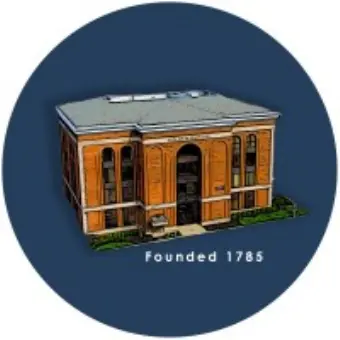Chief of Police

City of Clarksville
This job is no longer accepting applications
See open jobs at City of Clarksville.See open jobs similar to "Chief of Police" Clarksville-Montgomery County EDC.Description
- GENERAL STATEMENT OF JOB
This is the ninth of nine levels in the Police series. Incumbents plan, direct, and control the Police Department's resources, operations, and activities. Responsibilities may include developing and achieving departmental goals; implementing the directives of the Mayor and City Council; developing and maintaining community relations; reviewing and approving reports; preparing and managing a budget; and supervising senior-level managers.
***PLEASE NOTE: THIS POSITION WILL REMAIN OPEN THROUGH DECEMBER 4, 2024, OR UNTIL FILLED.*** Example of Duties
- SPECIFIC DUTIES AND RESPONSIBILITIES
Essential Functions:
Manages and supervises senior level managers to include prioritizing and assigning work; conducting performance evaluations; ensuring staff are trained; ensuring that employees follow policies and procedures; maintaining a healthy and safe working environment; and making hiring, termination, and disciplinary recommendations.
Prepares and administers budget; prepares cost estimates for budget recommendations; submits justifications for budget items; monitors and controls expenditures.
Provides oversight and participates in directing the implementation of internal operations for the department, which includes planning, coordinating, administering, and evaluating programs, projects, processes, procedures, systems, standards, and/or service offerings; allocating resources; and implementing the directives of the Mayor and the City Council.
Reviews, analyzes, and approves a variety of department reports.
Coordinates the activities of the Police Department with local, State, and Federal agencies; coordinates activities with citizens; ensures compliance with Federal, State, and local laws, regulations, codes, and/or standards.
Develops and maintains community relations.
Performs other duties of a similar nature or level.
Performs other related work as required.
Typical Qualifications
- MINIMUM EDUCATION AND TRAINING AND EXPERIENCE
Education and Experience
Bachelor's degree in Criminal Justice, Public Management, or a related field.
Ten (10) years of law enforcement experience, including two (2) years as a Captain or higher rank.
An equivalent combination of education and experience sufficient to perform the job's essential duties.
License and CertificationsA valid driver’s license.
Tennessee Police Officer Certification.
Residence Requirements
Must reside within a 60-minute drive time (obeying all traffic laws) to Police Headquarters at 135 Commerce Street.
Supplemental Information
- MINMUM QUALIFICATIONS AND STANDARDS REQUIRED
Knowledge, Skills, and Abilities:
Knowledge of:
Leadership principles.
Advanced police principles and practices.
Applicable Federal and State laws, city statutes, and laws of arrest.
Rules, regulations, and procedures of the Police Department.
Strategic planning principles.
Budgeting principles.
Project management principles and practices.
Community relations principles.
Recordkeeping principles.
Computers and related software applications.
Skill in:
Monitoring and evaluating employees.
Prioritizing and assigning work.
Developing and implementing policies and procedures.
Enforcing Federal, State laws, and city statutes.
Developing and implementing short- and long-term strategies.
Maintaining required records and preparing reports
Maintaining community relations.
Presenting information.
Using a computer and related software applications.
Communication and interpersonal skills as applied to interaction with subordinates, coworkers, supervisor, the public, etc., sufficient to exchange or convey information and to give and receive work direction.
Physical Requirements:
The work is heavy work requires exerting up to 100 pounds of force occasionally, and/or up to 50 pounds of force frequently, and/or up to 20 pounds of force constantly to move objects. Additionally, the following physical abilities are required:
Balancing: Maintaining body equilibrium to prevent falling while walking, standing, or crouching on narrow, slippery, or erratically moving surfaces. The amount of balancing exceeds that needed for ordinary locomotion and maintenance of body equilibrium.
Climbing: Ascending or descending ladders, stairs, scaffolding, ramps, poles, and the like, using feet and legs and/or hands and arms. Body agility is emphasized.
Crawling: Moving about on hands, knees, hands, and feet.
Crouching: Bending the body downward and forward by bending the leg and spine.
Feeling: Perceiving attributes of objects, such as size, shape, temperature, or texture, by touching with skin, particularly that of fingertips.
Fingering: Picking, pinching, typing, or otherwise working, primarily with fingers rather than with the whole hand as in handling.
Grasping: Applying pressure to an object with the fingers and palm.
Handling: Picking, holding, or otherwise working, primarily with the whole hand.
Hearing: Perceiving the nature of sounds at normal speaking levels with or without correction. Ability to receive detailed information through oral communication, and to make the discrimination sound.
Kneeling: Bending legs at the knee to come to rest on the knee or knees.
Lifting: Raising objects from a lower to a higher position or moving objects horizontally from position to position. It occurs to a considerable degree and requires substantial use of upper extremities and back muscles.
Mental Acuity: Making rational decisions through sound logic and deductive processes.
Pulling: Using upper extremities to exert force to draw, haul or tug objects in a sustained motion.
Pushing: Using upper extremities to press against something steady to thrust forward, downward, or outward.
Reaching: Extending hand(s) and arm(s) in any direction.
Repetitive Motion: Substantial movements (motions) of the wrist, hands, and/or fingers.
Speaking: Expressing or exchanging ideas by means of the spoken word, including the ability to convey detailed or important spoken instructions to other workers accurately and concisely.
Standing: Particularly for sustained periods of time.
Stooping: Bending body downward and forward by bending the spine at the waist. It occurs to a considerable degree and requires full motion of the lower extremities and back muscles.
Talking: Expressing or exchanging ideas by means of the spoken word, including those activities in which they must convey detailed or important spoken instructions to other workers accurately, loudly, or quickly.
Visual ability 1: sufficient to perform an activity like preparing and analyzing data and figures; transcribing; viewing a computer terminal; and/or extensive reading.
Visual ability 2: sufficient to include color, depth perception, and field vision.
Visual ability 3: sufficient to determine the accuracy, neatness, and thoroughness of the work assigned or to make general observations of facilities or structures.
Visual ability 4: sufficient to operate motor vehicles and/or heavy equipment, both day and night.
Visual ability 5: sufficient to perform an activity such as: visual inspection involving small defects, small parts, operation of machines; using measurement devices; and/or assembly or fabrication parts at distances close to the eyes.
Walking: Moving about on foot to accomplish tasks, particularly for long distances or move from one work site to another.
This job is no longer accepting applications
See open jobs at City of Clarksville.See open jobs similar to "Chief of Police" Clarksville-Montgomery County EDC.
